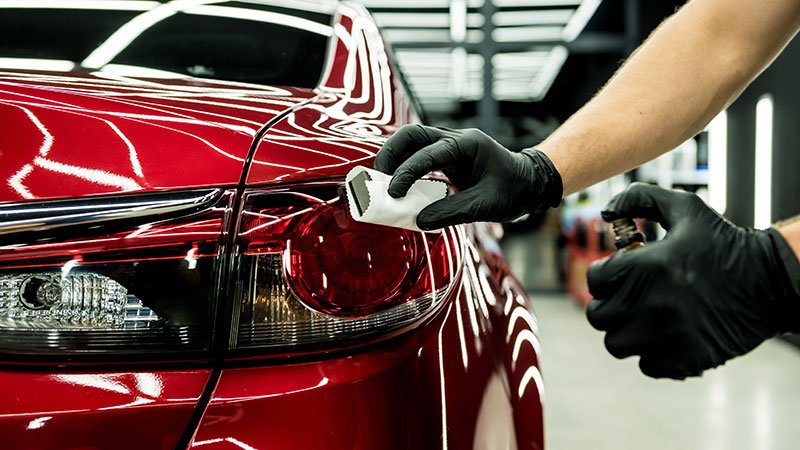Why Pick Ceramic Coatings San Jose for Long-Lasting Sparkle
Introducing the Science Behind Ceramic Coatings: How Does It Work and Why Is It Superior to Conventional Options?
Ceramic finishings have been getting appeal in various markets for their exceptional efficiency and longevity. Comprehending just how ceramic layers job and why they surpass conventional options is important for those seeking to improve the longevity and resilience of their materials.
The Chemistry of Ceramic Coatings
In recognizing ceramic coverings, delving into the elaborate chemistry behind their composition is essential for understanding their capability and resilience. Ceramic coverings are mostly composed of silicon dioxide (SiO2), which develops a protective and solid layer when put on various surface areas. This chemical framework supplies exceptional resistance to warm, chemicals, and deterioration, making ceramic finishes very demanded for a large range of applications.
The chemistry behind ceramic finishings involves the development of covalent bonds between silicon and oxygen atoms, developing a stiff network that improves the covering's strength and resilience. Furthermore, the visibility of other aspects such as titanium, aluminum, and zirconium more boosts the covering's buildings, using raised hardness and bond to surface areas.
Understanding the chemical structure of ceramic finishes permits for the personalization of formulations to match particular needs, whether it be for vehicle, industrial, or property objectives. By harnessing the power of chemistry, ceramic coatings remain to lead the method for exceptional protection and performance in numerous markets.
Advantages of Ceramic Coatings

One more significant advantage of ceramic coverings is their hydrophobic nature. This residential or commercial property triggers water to grain up and roll off the covered surface, bring dirt and impurities with it. Therefore, ceramic layers make cleaning and keeping surfaces a lot easier and much less lengthy. Ceramic layers provide boosted gloss and color depth, providing surfaces a glossy and vivid look. Overall, the plethora of advantages supplied by ceramic coatings make them a premium choice contrasted to traditional covering techniques.
Exactly How Ceramic Coatings Bond
Ceramic coatings bond to surfaces via a procedure that entails molecular bond and chemical interactions. When a ceramic coating is applied to a surface area, it creates a solid bond by chemically sticking to the surface area at a molecular degree.
In addition, the chemical interactions in between the ceramic finishing and the surface area even more enhance the bond. ceramic coatings san jose. These communications enable the ceramic layer to develop a seamless and constant layer on the surface, supplying exceptional security and resilience. Unlike standard finishes that may sit on the surface area without fully bonding, ceramic layers produce an irreversible bond that is resistant to chemicals, UV rays, and severe environmental problems

In essence, the bonding device of ceramic coatings guarantees a lasting and reliable safety layer that outperforms standard finishing options. This premium bond adds to the toughness, scrape resistance, and longevity of ceramic coatings, making them a favored option for various applications.
Resilience of Ceramic Coatings
The remarkable longevity of ceramic finishes originates from their robust molecular bond and chemical communications with surfaces, guaranteeing a durable protective layer that exceeds conventional covering alternatives. find more info When used, ceramic finishings create a strong bond with the substratum, creating a resistant obstacle versus different see this site environmental stress factors such as UV radiation, chemicals, and abrasions. This bond is so protected that it can endure the rigors of everyday usage without weakening or weakening swiftly.
Unlike conventional coverings that might degrade over time, ceramic coatings preserve their stability for an extended duration, providing long-lasting security for the underlying surface. The strong molecular structure of ceramic coverings stands up to cracking, fading, and peeling, making certain that the surface stays secured and aesthetically pleasing for several years to come. This longevity not only minimizes the requirement for constant reapplications yet also saves time and money over time. Generally, the outstanding sturdiness of ceramic layers makes them an exceptional option for securing a wide variety of surface areas in various applications.
Ceramic Coatings Vs. Traditional Choices
In comparison to conventional finish approaches, ceramic coverings supply an unique mix of toughness and protective abilities that establish them apart in different surface security applications. Typical alternatives such as wax or sealers provide a short-lived layer of protection that can diminish swiftly, needing frequent reapplication. On the various other hand, ceramic finishes develop a strong bond with the surface area, creating a semi-permanent or irreversible barrier that is highly resistant to abrasion, chemicals, UV rays, and severe temperature levels.
Additionally, ceramic layers supply exceptional hydrophobic properties compared to traditional layers. The hydrophobic nature of ceramic coverings creates water to bead up and roll off the surface area, lugging dirt and contaminants with it. This self-cleaning effect aids to preserve the surface area's tidiness and gloss for extended periods, minimizing the requirement for regular maintenance.
Additionally, ceramic finishes have a thicker layer contrasted to typical choices, giving enhanced scrape resistance and protection against minor effects. This resilience ensures lasting performance and aids protect the visual appeal of the dealt with surface for an extensive period.
Conclusion
Finally, the scientific research behind ceramic coatings depends on their chemical composition and bonding residential or commercial properties, making them exceptional to standard options. The benefits of ceramic finishings include enhanced durability and defense for surface areas. By understanding just how ceramic finishings work and their advantages over standard choices, one can make informed decisions when thinking about finishing options for various applications.
Unlike conventional layers that may rest on helpful resources the surface area without completely bonding, ceramic finishings develop an irreversible bond that is resistant to chemicals, UV rays, and severe ecological conditions.
The outstanding longevity of ceramic coverings stems from their robust molecular adhesion and chemical interactions with surfaces, guaranteeing a sturdy safety layer that goes beyond traditional finish choices.Unlike standard finishes that might deteriorate over time, ceramic coverings keep their integrity for a prolonged period, giving durable protection for the underlying surface.In comparison to standard covering techniques, ceramic finishes provide an unique blend of sturdiness and safety capabilities that establish them apart in different surface area protection applications. By understanding exactly how ceramic coverings work and their benefits over traditional options, one can make enlightened decisions when taking into consideration finish options for different applications.